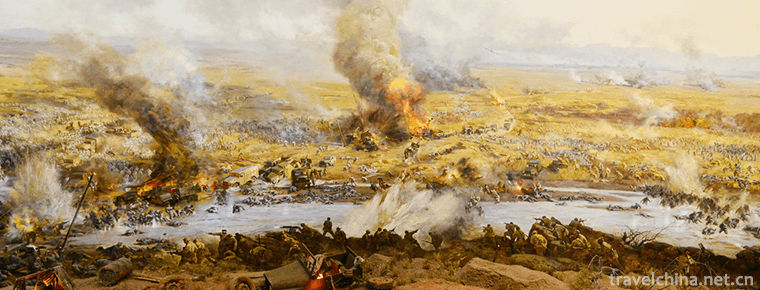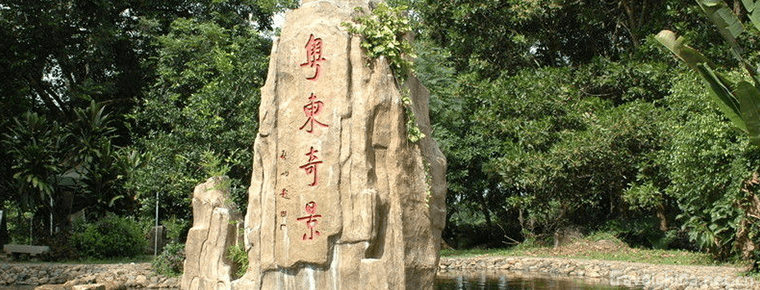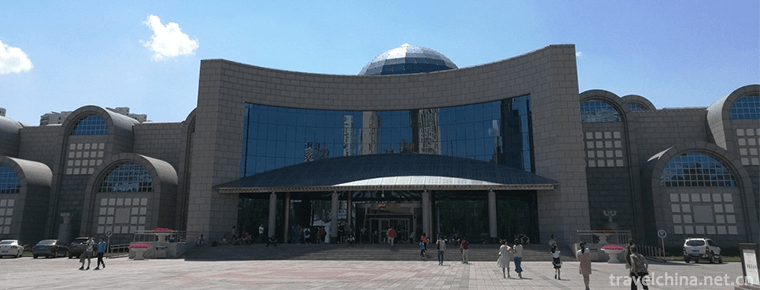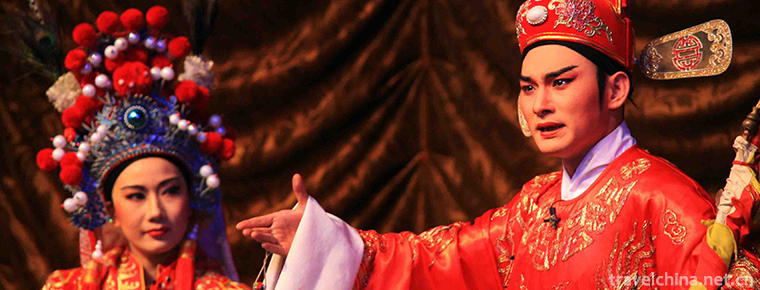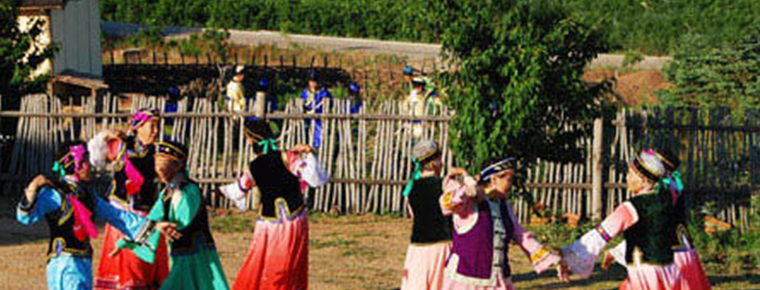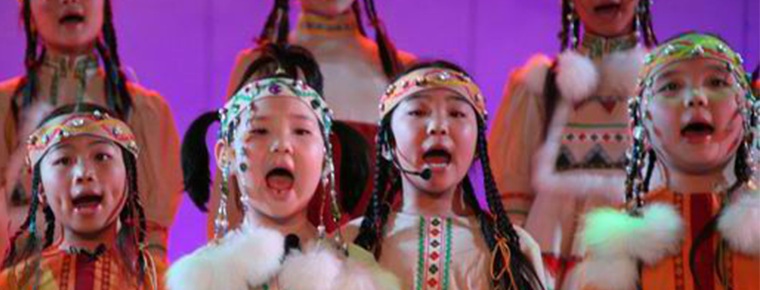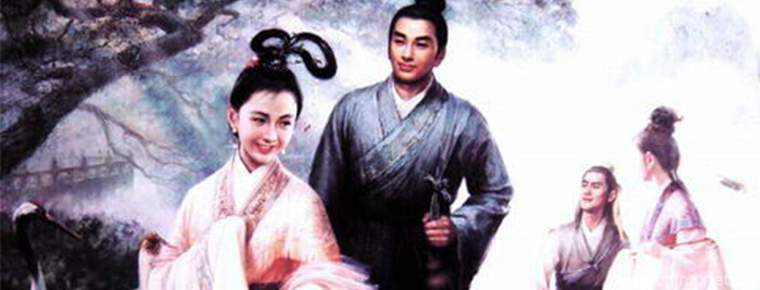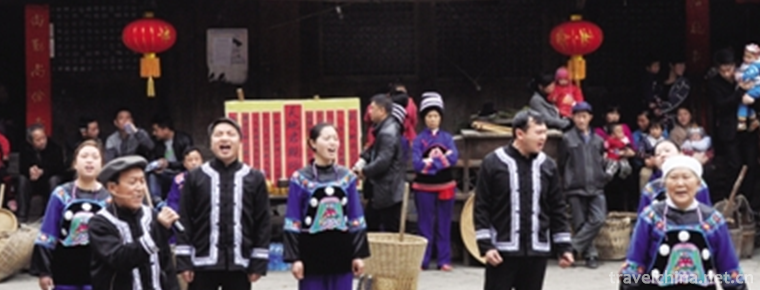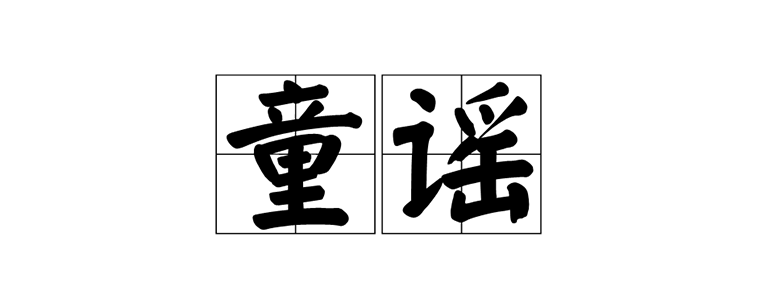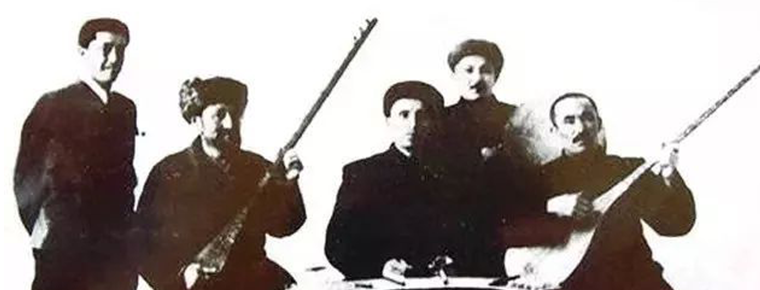Nanhai Chan Temple
Nanhai Chan Temple
Nanhai Chan Temple, a national AAAA scenic spot, is located in the southeast corner of Runan County, Zhumadian City, Henan Province, China. It covers an area of more than 500 mu, and has a vast Temple territory and numerous buildings. The main building is the Daxiong Palace, which has a base of 2 meters and a square surface with a side length of 80 meters. The building area has reached 6400 square meters.
Shanmen Archway of Nanhai Zen Temple is 50 meters long and 31 meters high. On Yongdao Road, which is 500 meters long and 20 meters wide, 12 granite archways have been built from north to south according to 12 causes, 12 zodiac signs and 12 bodhisattvas. The style is unique and magnificent.
The northeastern part of Nanhai Zen Temple is the Baigong Shangren Shrita Courtyard. The pavilions and tablets are scattered and well laid out. The Shrine Tower built for Lord Bai Gong is carved from granite, which combines the ancient Chinese architectural art with the modern style of building the tower in Southeast Asia. Starting from September 20, 2018, the ticket price of Nanhai Chan Temple scenic spot (4A level scenic spot) in Runan County, Zhumadian has been reduced from 50 yuan per person to 40 yuan per person.
Construction History
According to historical records, the small South China Sea, formerly known as the South Lake, was the land where dykes were built and dikes were excavated in successive dynasties, but the lake could not be built in the later part of the lake. After nearly 600 years of construction and decoration in the Ming and Qing Dynasties, a scenic area with a total area of 1000 mu has been formed, from the east of Wuyingta to the north of Rushui River to the trench. The Guanyin Pavilion built in Nanhu in Ming Dynasty is a model imitating Putuo Temple in South China Sea. Because Guanyin Pavilion is smaller than the South China Sea, people call the South Lake Xiaonanhai. The ancient buildings in Xiaonanhai include Guanyin Pavilion, Dashi Temple, Quan Ti Tower and Huanghe Tower.
According to the Records of Runan County, Guanyin Pavilion was built in Jiajing in the Ming Dynasty in 24 years. The Yellow Crane Tower, built in the thirty-second year of Wanli in the Ming Dynasty (1606 A.D.), was destroyed at the end of the Ming Dynasty. During Yongzheng reign of the Qing Dynasty, Tianzhong Academy was located on Nanhu Lake, which was called Nanhu Academy. During the reign of Qianlong, the inscription "Deng Ying" by Daxing Dou Yu was inscribed on a bluestone and stood on the side of South Hubei.
According to the Records of Runan County, in 1928, Feng Yuxiang, the governor of Henan Province, ordered the beating of god-picking temples. All the temple gods in Xiaonanhai were destroyed and gradually recovered in 1937. Unfortunately, it was destroyed again during the Cultural Revolution and was replanted by the Runan Garden School.
In 1994 (another statement is 1992 ), the Ming multiplier, presided over by Guanyin Chan Temple in Daxiangshan, Taipei, invested 150 million yuan to rebuild the temple in his hometown. Taipei Baisheng Master's Shrine Tower is also built in this temple. On September 24, 1994, more than 800 great mages, monks and people from all walks of life from Taiwan, Thailand, Indonesia, Singapore, Hong Kong and other countries and regions attended the inauguration ceremony of Master Bai Sheng's Shrita.
Temple Layout
Nanhai Chan Temple is built on the beach of Ruhe River. The overall layout of the temple is a "scholar" type. The surrounding wall is 3 meters high and 5,300 meters long. It is a brick-concrete structure. In front of the temple gate are three palaces, and on both sides of the temple are worshipped two vajrayans as the second general of "hum-ha". In the south of the temple are the palace building areas with the center of the Daxiong Palace.
The building area of Daxiong Palace is 5274.30 square meters, 36 meters high. It is a three-storey double eaves palace. There is a 17-meter-high, 72-ton bronze statue sitting in the interior and a 1200-square-meter square in front of the palace. In front of Daxiong Palace is Tianwang Palace, with a building area of 333.16 square meters and a height of 15 meters. There are four statues of diamonds and eight statues of strange colored mud in the palace.
The latter is the Guanyin Hall, with a building area of 2170.8 square meters. The hall is dedicated to only one statue 14 meters high, carved by camphor wood with thousands of hands and thousands of eyes, with two-sided Guanyin gold sitting statues. The two halls are 1520 square meters high and 21 meters high. In the hall, there is a statue of Jin Manju and Puxian bronze statue with a height of 9 meters and a weight of 12 tons.
On the left and right sides of Daxiong Palace are bell tower and drum tower, with a building area of 626 square meters and a height of 36 meters. It is a two-storey double eaves Pavilion building. The northern part of the monastery consists of twelve archways and mountain gates. Twelve archways are 7.6 metres high and 8 metres wide. They are situated on a 500 metre long swing road. Shanmen is located in the north of Twelve Memorial Squares. It is the north gate of Nanhai Zen Temple. It is 32 meters high and 50 meters wide. It is an archway building.
Century Peace Bell Tower is located in the northeast side of the monastery, with a building area of 772.84 square meters and a height of 34.6 meters. It is a three-storey wing-corner Pavilion building with a 7-meter high, 6-meter diameter and 21-ton Century Peace Bell. The north side of the Bell Tower is the White Saint-Shrine Garden. The upper living room is a rectangular enclosure group. There are more than 20 buildings on three floors. There are free-living ponds, goldfish in the pond, rockery hills and a nine-curve stone bridge.
White Saint Shrine Garden covers an area of more than 10 mu. There is a white Saint Shrine Tower in the middle of the garden, 15.5 meters high, which is a classical building. There are clear stone paved paths in the park. Flowers, plants and trees are planted on both sides of the paths. In the west of the monastery, Kaishan Hall is a two-storey pavilion building with a "Buddha" garden consisting of kimbers and cypress.
Xishanmen Architecture
It takes two times to cross the Ruhe River, three bridges and three gates to enter the Daxiong Palace of Nanhai Zen Temple from Xishan Gate. They are:
World Peace Gate, Jinxia Bridge;
World Cooperation Gate, Cross-Strait Cooperation Bridge;
The world and the closure of the door, three-center bridge.
This group of buildings, with one door and one bridge as a unit, constitutes three groups of architectural landscape with unique style and symbolic significance.
Ticket Price
Starting from September 20, 2018, the ticket price of Nanhai Chan Temple scenic spot (4A level scenic spot) in Runan County, Zhumadian has been reduced from 50 yuan per person to 40 yuan per person.
Traffic information
Zhumadian is an important city on the Beijing-Guangzhou Railway. It lies between Luohe and Xinyang, and to the west is Nanyang.
Zhumadian Railway Station is located near Jiefang Avenue and Renmin Street.
Zhengzhou: Every hour, luxury bus, ticket price is about 48 yuan; every day 5:20-18:30 every 25 minutes departure.
Luoyang: 7:40, 13:50, 14:20, 14:50, 15:30.
Xinyang: 6:00-18:00, every 30 minutes.
Bus from Zhumadian to Runan County by bus, the scenic spot is in the county town.





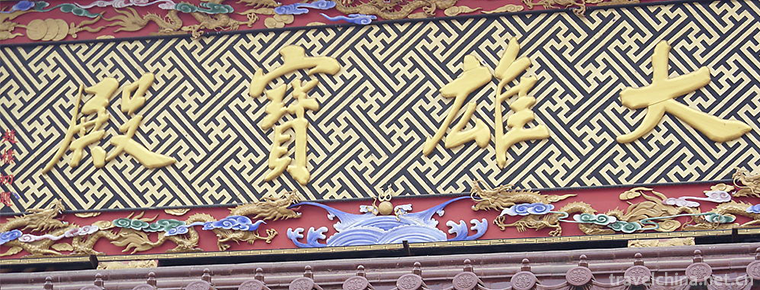
-
Laiwu Campaign Memorial
Laiwu Campaign Memorial Hall is situated on the Huangshan Mountain in Laiwu District, Jinan City. It covers an area of 45,000 square meters and has a building area of more than 8,000 square meters.
Views: 133 Time 2019-01-29 -
Green Island Tourist Villa
Green Island Tourist Villa is one of the eight new scenic spots in Chaozhou, the national demonstration sites of leisure agriculture and rural tourism, the base of science and technology.
Views: 104 Time 2019-02-06 -
Museum of Xinjiang Uygur Autonomous Region
The Museum of Xinjiang Uygur Autonomous Region, located at No. 132 Northwest Road, Urumqi City, is a provincial comprehensive geographic museum..
Views: 230 Time 2019-02-25 -
Chao Opera
Chaozhou Opera, known as "Chao Diao", "Chao Yin Opera" and "Bai Zizi Opera", was widely spread in Zhao'an, Yunxiao, Pinghe, Dongshan, Zhangpu and Nanjing of southern Fuji.
Views: 165 Time 2019-04-16 -
Daur Ruzhigle Dance
"Luzhigle" is a representative folk dance of Daur nationality. It varies from place to place, including "Alhambo", "Langtudabe", "Hakumai", "Hagen Melger&q.
Views: 104 Time 2019-04-22 -
Oroqen Folk Songs
The Oroqen nationality mainly distributes in the Oroqen Autonomous Banner, Buteha Banner of Hulunbeier League, Inner Mongolia Autonomous Region and .
Views: 220 Time 2019-04-28 -
Old soup essence formula
The formulation of Royal Food Old Tangjing includes the formulation and production technology of Old Tangjing, which is a valuable cultural treasure in the history of condiment development in China. T.
Views: 126 Time 2019-05-11 -
Legend of Liu Ruan
The legend of Liu Ruan, also known as the story of Liu Ruan's encounter with immortals, is spread in Shangxian (now Xinchang, Shengzhou) and Tiantai. It is a mythological love story that takes Liu Rua.
Views: 388 Time 2019-05-13 -
Nanxi chant
Nanxi chant is popular in Qianjiang District of Chongqing City. Its origin can be traced back to Tang Dynasty. Its embryonic form is Tujia peasants'work chant and folk song chant, which are similar to.
Views: 114 Time 2019-06-07 -
Nursery rhyme
Nursery rhymes are short poems written for children, emphasizing rhythm and rhyme. They are usually spread orally. Many nursery rhymes are processed and spread according to the idioms in ancient ritua.
Views: 159 Time 2019-06-23 -
Uzbek Ehilai and Yelai
Uzbek Ehilai and Yelai are mainly distributed in Kashgar, Shache, Yecheng and Yining, Ili Kazakh Autonomous Prefecture, Xinjiang Uygur Autonomous Region. Uzbek people have excellent music and dance cu.
Views: 120 Time 2019-06-29 -
Sichuan Minzu College
Sichuan College for Nationalities is a full-time general undergraduate college in Sichuan Province. It is also the only national undergraduate college in Kangba Tibetan District. It is located in Guza.
Views: 175 Time 2019-08-31
